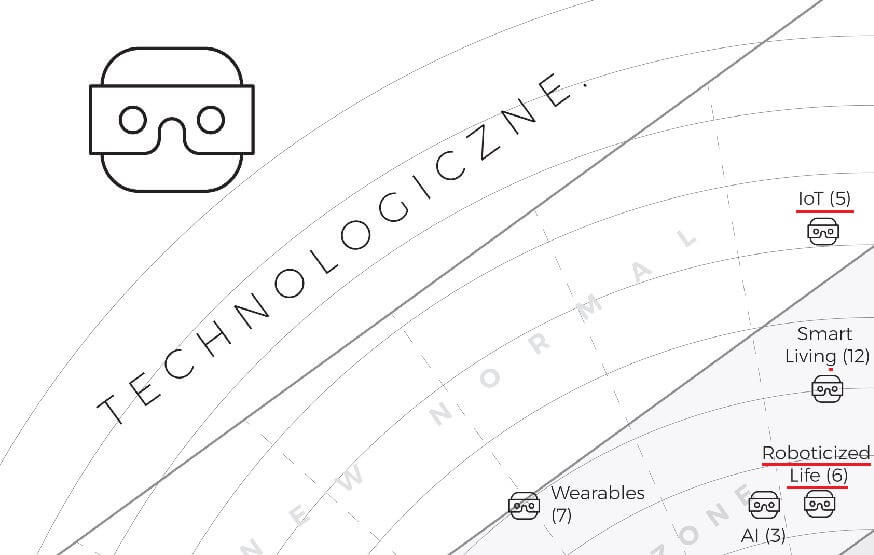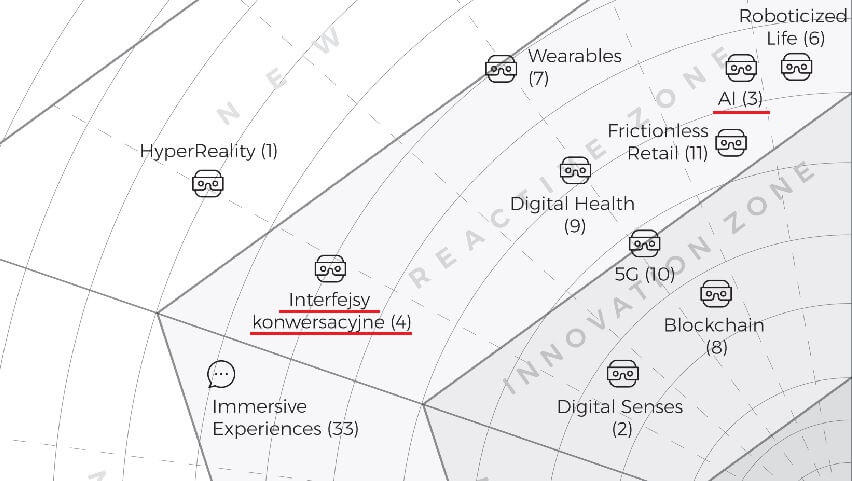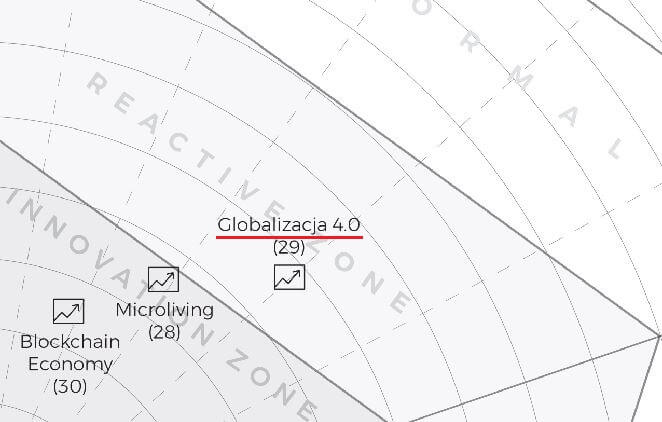Balluff, as a company offering technological solutions for industry, has a real impact on the development of Industry 4.0 in Poland. For this reason, we invited President Paweł Stefański to comment on the 20191 trend map published by the Infuture Institute, run by the most popular trend analyst in Poland - Natalia Hatalska.
Editors: The map presents 33 trends at various stages of development. Which of them are closest to you? With whom do you identify in your work and with whom in private?
Paweł Stefański: Certainly Industrial Internet of Things (IIoT), because it is a leading trend and Roboticized life, which is strongly manifested in the communication of robots with each other. In addition, machine vision and digital trend, as a current oriented, relieving or supporting the sense of pattern in decision-making processes as well as related to simplifying processes, e.g. purchasing, and bringing the customer to purchase as soon as possible.
Privately, trends related to localization are close to my heart, especially craftsmanship. I run a vineyard myself and I appreciate things created from the beginning to the end, as well as I see areas where you can introduce easy and low-cost automation, i.e. automation systems that you can implement yourself with little money.
Editors: Let's talk about technological trends related to Balluff's business profile. Solutions based on artificial intelligence have left the innovation zone to the reactive zone, which means that they are beginning to be implemented. How do you assess the state of Industry 4.0 in Poland?
PS: In Poland, modern technologies are successively implemented and we can observe it in two areas - AI (Artifitial Intelligence) and predictive maintenance. Artificial intelligence is based on data, and Balluff solutions such as sensors power databases. Then, on their basis, further systems related to the processing of large databases can generate information and further draw conclusions based on machine learning. We are currently working on systems that are also aimed at supporting and optimizing these elements.
When it comes to predictive maintenance, enterprises begin to use devices with embedded algorithms, on the basis of which the parameters of a given device are monitored. Thanks to this, it is possible to warn, for example, about a potential fault or the need to replace an aging element.
Editors: Further technological trends are associated with artificial intelligence, such as Roboticized life. Is this an area that will soon propel Polish industry?
PS: Certainly Roboticized life will affect the optimization of industry, both in the production line as well as in matters related to the design and planning of production. There are already companies where those responsible for these areas are supported by new technologies. The system performs most of the tasks related to designing or planning, and it is up to the person to make the final decision on which of these projects will come into effect. Artificial intelligence is ideally suited to where there is room for thinking thinking.
Editors: Technological trends described as fully functioning are Hyper Reality and the Internet of Things. Do you feel their presence in your professional environment?
PS: AR and VR are most present in the industry. An example of application is the monitoring of machine operation and the operator's guide through the steps related to maintaining, maintaining or repairing machine faults. There are companies that provide a service pack containing VR glasses. A service technician, even at the other end of the world, connects to the VR system and gives repair instructions to the person who is physically at the broken device. It is quite possible that in the future such procedures will be implemented in large numbers with the help of robots.
Editors: Along with industry 4.0, new trends in economics are also developing. This is evidenced even by the developing trend referred to as Globalization 4.0. The market has been moving intensively towards the service economy for several years. Is this trend slowly noticeable among customers from your industry? Does it change the approach to selling your solutions?
PS: There are already enterprises that implement the service economy in industry, and leasing is the main financial model. There are also operating companies in Poland that have nothing but their own production know-how. They use all machines and workforce in a subscription model. This is a trend that many modern companies are heading towards, and so are we.
Editors: Trends related to environmental protection and minimizing air pollution have passed on the agenda. Organizations are also taking over this trend, adapting their products and services so that their production is least harmful to nature. How does Balluff adapt to these trends?
PS: Balluff works in accordance with ISO standards - both qualitative and environmental. We optimize the use of energy and minimize the negative impact on the environment. We use photovoltaic panels, biodegradable materials and reduce CO2 emissions to the atmosphere. We are characterized by a holistic approach to plans and activities in the context of their impact on the environment. This thinking makes us look for business partners who adhere to the same principles.
footnotes:
1. http://hatalska.com/wp-content/uploads/2019/02/mapa-trendow-infuture-2019-online.pdf
Dictionary of terms (compiled by: infuture hatalska foresight institute, February 2019).
AI
Solutions based on artificial intelligence, big data and neural networks.
IoT
Internet of Things, all kinds of solutions connected to internet, intelligent and communicating with each other.
IIoT
Internet of Things used in industry
AR (from: wikipedia)
Augmented Reality is a system connecting the real world with the computer generated. Usually, the image from the camera is used, which is superimposed, generated in real time, 3D graphics.
VR (from: wikipedia)
Virtual reality, i.e. an image of artificial reality created using information technology. It involves multimedia creation of a computer vision of objects, spaces and events.
Machine Vision (from: wikipedia)
Industrial vision system, i.e. a system of cooperating electronic devices whose function is automatic visual analysis of the environment in the likeness of the sense of sight in people.
Roboticized life
The use of automation and robots in everyday life, to help in daily duties, in the care of the elderly, in education, therapy, etc.
Craftsmanship
In the era of globalization, where everything is basically the same everywhere, people are beginning to appreciate the work of human hands, local craftsmen.
Localism
Anti-trend to globalization, emphasizes that what is local is better, more authentic, more valuable.
Globalization 4.0
A new approach to economics, society development, politics - moving away from production and consumption towards "sharing and caring".
Sustainability
Sustainable development, caring for the natural environment, depleting resources, conscious consumption.
























